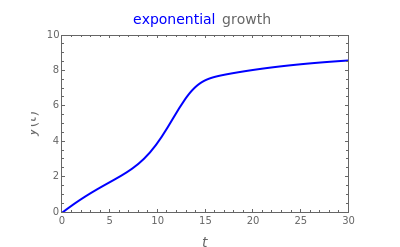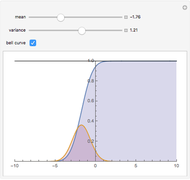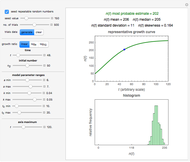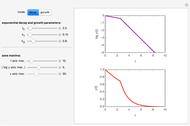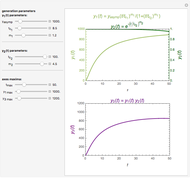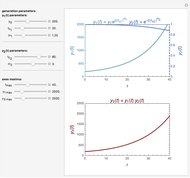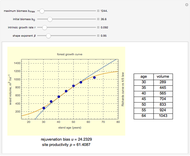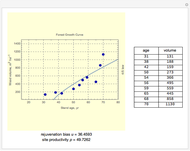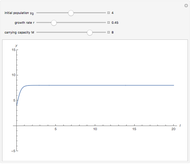Growth Curves for a Mixture of Two Subpopulations

Requires a Wolfram Notebook System
Interact on desktop, mobile and cloud with the free Wolfram Player or other Wolfram Language products.
The growth curves of two-subpopulation mixtures can have shapes that are practically indistinguishable from those of a homogeneous population, but they can also have a variety of distinctly different shapes. This is shown with simulated growth curves generated with a double-stretched exponential model and a two-term non-exponential model. The Demonstration also shows how a minor change in one of the subpopulation's growth parameters can sometimes result in a major change in the shape of the mixture's growth curve.
Contributed by: Mark D. Normand, Przemyslaw Remin, and Micha Peleg (November 2014)
Open content licensed under CC BY-NC-SA
Snapshots
Details
Snapshot 1: growth curve having two inflection points generated with the non-exponential model
Snapshot 2: growth curve having two inflection points generated with the double-stretched exponential model
Snapshot 3: oddly shaped highly asymmetric growth curve generated with the double-stretched exponential model
Snapshot 4: non-sigmoid growth curve generated with the non-exponential model
Snapshot 5: typical sigmoid growth curve with a substantial lag time generated with the non-exponential model
Snapshot 6: typical sigmoid growth curve with a short lag time generated with the double-stretched exponential model
Snapshot 7: typical sigmoid growth curve with a long lag time generated with the double-stretched exponential model
The growth curve of a population is frequently sigmoid or concave downward approaching an asymptotic level, primarily determined by the habitat's carrying capacity. Such curves have been described by a variety of mathematical models, which in most cases can be used interchangeably. When the population is a mixture of two subpopulations, these shapes can be maintained. However, depending on the individual subpopulation's growth parameters, the growth curve can assume different shapes that are sometimes quite atypical.
In this Demonstration, the regular and odd shapes are generated with a two-term general growth model  , where
, where  is either the net growth ratio
is either the net growth ratio  or the logarithmic growth ratio
or the logarithmic growth ratio  , where
, where  and
and  are the momentary and initial sizes of the population, respectively. The first definition applies to comparatively moderate growth levels and the second to intensive growth resulting in a population rise by several orders of magnitude. According to both definitions, at
are the momentary and initial sizes of the population, respectively. The first definition applies to comparatively moderate growth levels and the second to intensive growth resulting in a population rise by several orders of magnitude. According to both definitions, at  , where
, where  ,
,  .
.
The chosen functions for  and
and  , whose complete formulas are displayed above the growth curve's plot, are the three-parameter stretched exponential model
, whose complete formulas are displayed above the growth curve's plot, are the three-parameter stretched exponential model  or the non-exponential model
or the non-exponential model  ), both satisfying the condition that
), both satisfying the condition that  . According to both models,
. According to both models,  , the subpopulation's asymptotic growth level,
, the subpopulation's asymptotic growth level,  is a characteristic time, and
is a characteristic time, and  is a steepness parameter. You can vary them and the
is a steepness parameter. You can vary them and the  plot's axes maxima. According to both the exponential and non-exponential models, the asymptotic growth level of the mixed population,
plot's axes maxima. According to both the exponential and non-exponential models, the asymptotic growth level of the mixed population,  , is
, is  .
.
The purpose of the Demonstration is to visualize the concept of differential population growth, not to match any experimental observation of a particular organismic or non-organismic population. Consequently, not all parameter combinations necessarily have real-life counterparts.
Permanent Citation

